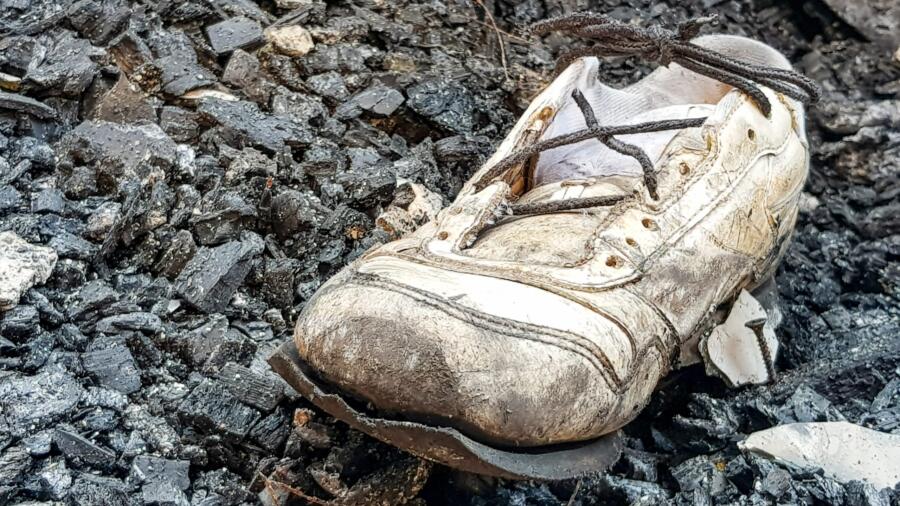When the chaos ends and the headlines fade, grief doesn’t go away—it waits. In that quiet aftermath, one man walks into the wreckage not to mourn, not to judge, but to retrieve what remains. A watch. A wedding ring. A backpack. Robert A. Jensen, chairman of Kenyon International Emergency Services, has spent his life doing what few can—returning the last fragments of a lost life to those left behind.
This isn’t a story about crime scenes or justice. It’s a story about closure, memory, and the last human touches that matter more than words ever could.
From Train Wrecks to Ground Zero: A Century of Compassionate Recovery
The roots of Kenyon International trace back to a 1906 train disaster near London. Two undertakers offered their services to identify the dead. Over a century later, that mission has expanded to some of the world’s darkest days:
- The Oklahoma City Bombing
- September 11, 2001
- Hurricane Katrina
- The Manchester Arena bombing
- Plane crashes from Egypt to Indonesia
Through each disaster, Jensen’s work has remained singular: reunite the grieving with the personal belongings of the people they lost.
“What we want to do,” Jensen says, “is take care of each family as if they’re the only family that matters.”
The Sacred Weight of Objects Left Behind
When the dead are gone, their objects remain—and those objects become everything.
A woman’s purse filled with makeup and handwritten notes. A child’s stuffed toy pulled from beneath concrete. A digital camera with photos of a vacation that would never end.
“For families, these items are sacred,” Jensen explains. “They’re proof of life. They’re memory made physical.”
Some families want items pristine and restored—cleaned, polished, placed in velvet boxes. Others prefer them as they were, untouched and raw. One grieving mother told Jensen, “I’ve washed my son’s clothes all his life. I want to be the last one to wash his shirt.”
The grief is unique. But the need to hold on—that’s universal.
When Tragedy Tells Hidden Stories
Sometimes, the items Jensen’s team recovers do more than comfort—they uncover the truth.
In Hurricane Katrina’s aftermath, bullet-ridden debris emerged from floodwaters. It wasn’t the storm that killed some victims—it was the Danziger Bridge shootings, a crime that might have gone unnoticed without Jensen’s team.
In every disaster, patterns emerge: families calling hotlines, begging for updates. But when some victims receive no inquiries at all, it raises darker questions.
Who was this person? Why is no one calling?
Even in silence, Jensen listens for stories.
Reimagining the Process: Cataloging the Last Traces of a Life
After the TWA Flight 800 crash in 1996, federal law required that personal effects be returned to families. But how?
Jensen pioneered a new system—photographic catalogs of recovered belongings. Today, families browse online databases, identifying loved ones’ items not by name, but by recognition.
“We’ve had people identify iPods because of a playlist. A cracked phone. A charm bracelet with initials. These are not just things. They’re them.”
Each item is documented, categorized, and carefully handled—not by forensic scientists, but by hearts that understand their importance.
The Man Who Leaves Without Saying Goodbye
Jensen never stays in touch with the families he helps. He’s not a therapist. He’s not a friend.
“I’m not a reminder of a good time,” he says. “My job is to guide them across the abyss of grief—and then disappear.”
His presence is fleeting, but his impact is permanent.
The Weight of Witnessing the Worst
Jensen has seen more tragedy than most people could survive. Before Kenyon, he served in the U.S. Army’s Mortuary Affairs unit, handling the remains of soldiers lost to war.
Now, decades later, he’s learned how memories stick—not as images, but as sounds and smells.
“I hear a jackhammer and think of Oklahoma City. A big truck reminds me of the UN bombing in Baghdad.”
He doesn’t fear death. He doesn’t even dwell on it. But he knows how close it always is. He still remembers a woman pulled from rubble—one shoe on, one shoe off—caught mid-motion as life ended.
A moment’s delay, and she might’ve lived.
“You don’t want the memories I have,” he admits. “You just try not to worry, because you can’t control it.”
The Final Act of Love
In a world obsessed with justice, headlines, and politics, Jensen’s work exists in a quiet place. A suitcase gently handed back. A ring returned to a widow’s palm. A photo album placed in trembling hands.
To outsiders, these are just items. But to the grieving, they are proof that love existed—and that someone cared enough to bring it back home.
“You can’t fix loss,” Jensen says. “But you can give people something to hold onto.”
🧠 Frequently Asked Questions
Who is Robert A. Jensen?
He is the Chairman of Kenyon International Emergency Services and a global expert in mass-fatality and disaster response. He specializes in recovering and returning personal effects to families.
What is Kenyon International’s role in disasters?
They handle body identification, site cleanup, and most critically, the recovery of personal belongings following mass-casualty events.
Why are personal effects important in grieving?
They serve as emotional anchors, offering families a tangible connection to lost loved ones. These objects often hold more value than any legal or monetary compensation.
How do families identify personal items?
Jensen’s team photographs and categorizes belongings in secure databases, allowing families to digitally identify items.
Does Robert Jensen stay in contact with families?
No. He believes his role is temporary—to assist during the worst days of someone’s life and then step away.
Which disasters has he responded to?
His team has responded to Oklahoma City, 9/11, Hurricane Katrina, Haiti earthquakes, the Manchester bombing, and many major plane crashes globally.

